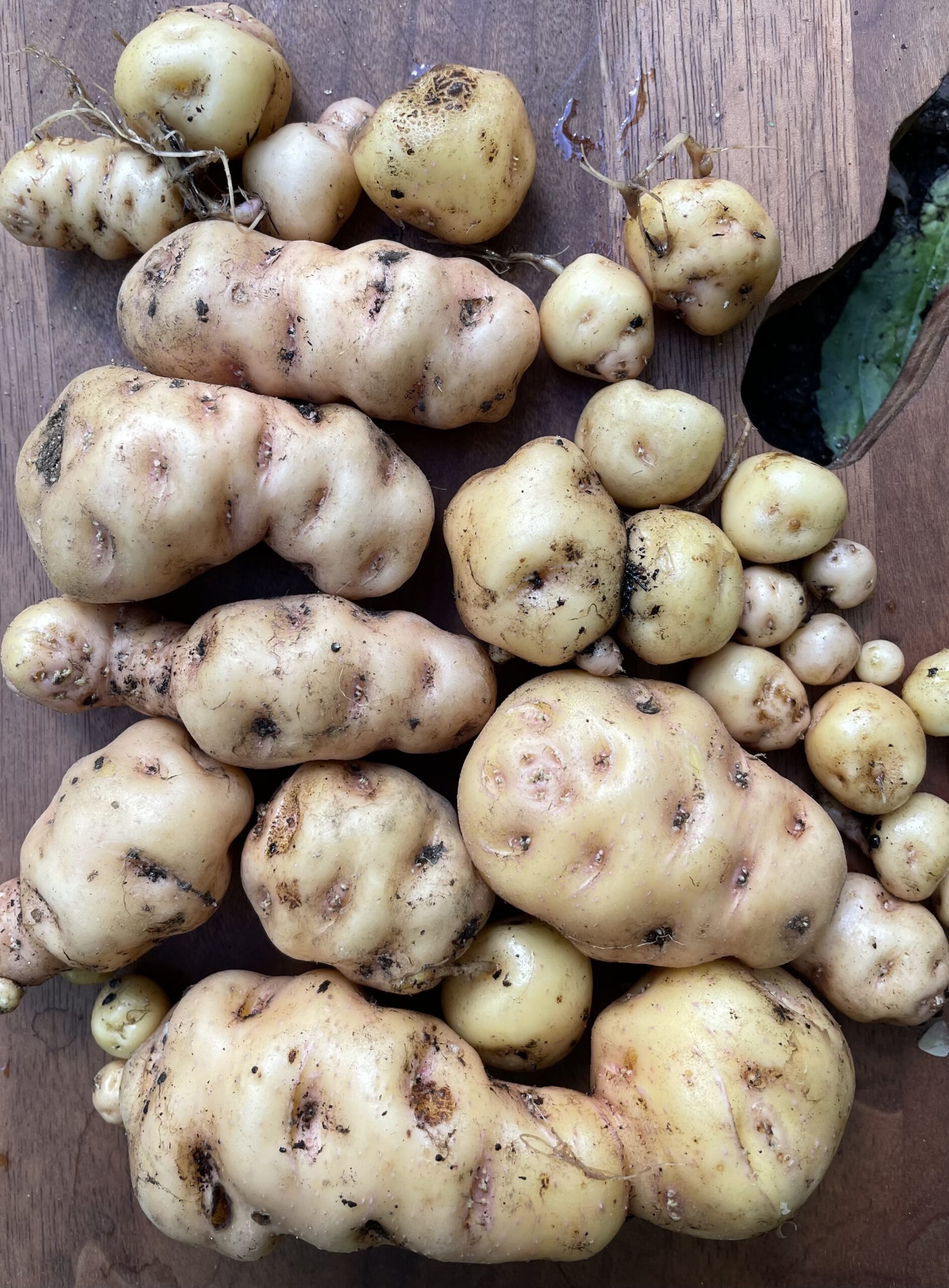Experience-Seeds-Knowledge-Plant Discoveries-Ecological Enrichment-Join Now Click Here!

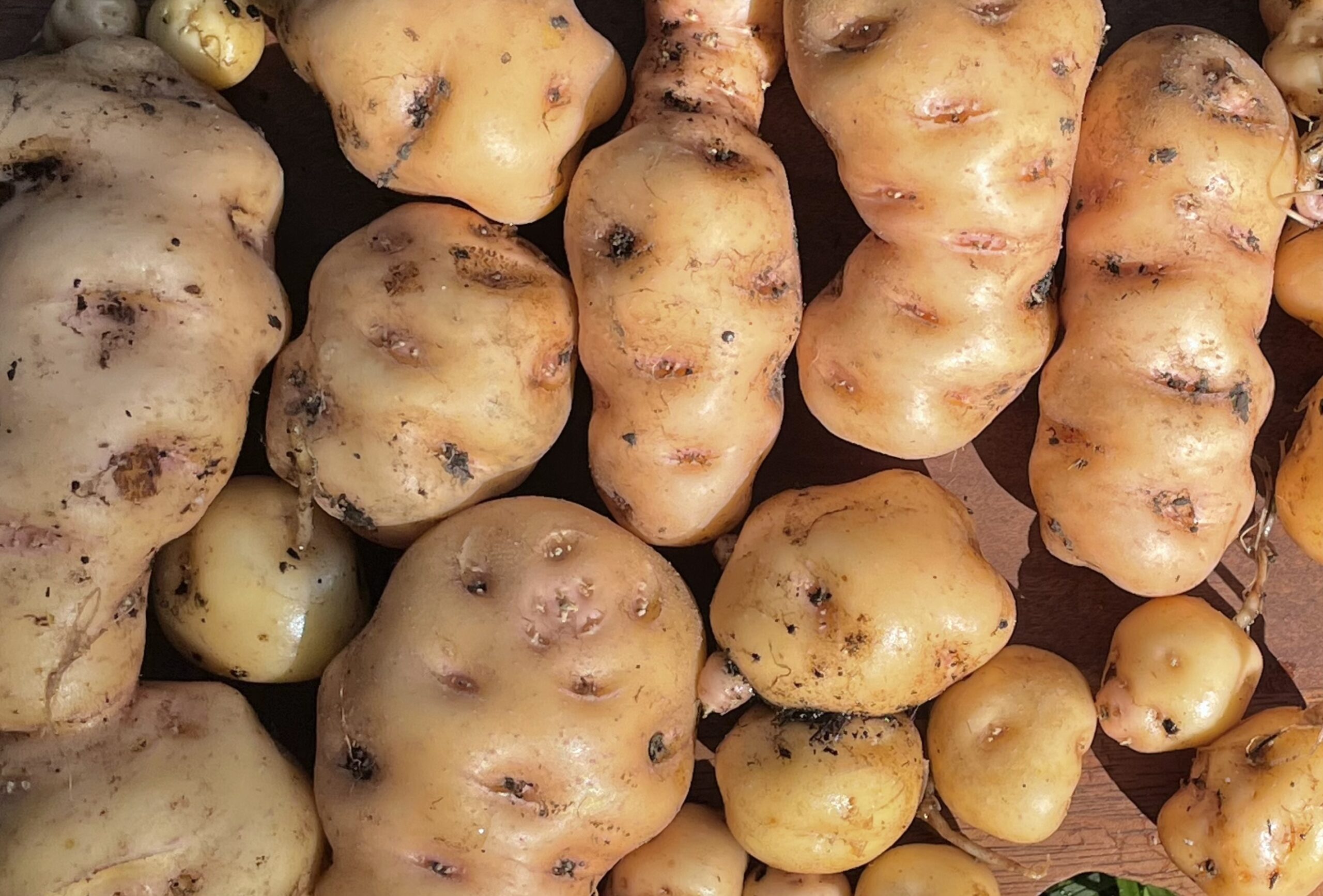
A Potato Escapes Cultivation and Becomes Feral
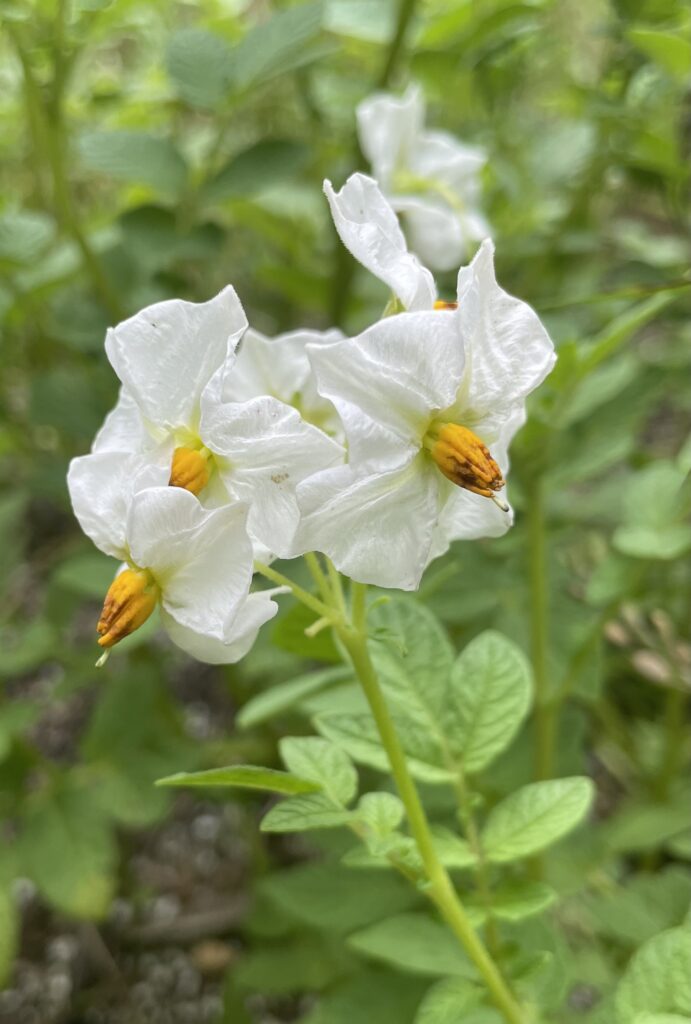
In the process of trying to define a wild potato, I began to wonder how botany would characterize a well-known crop plant found as a wild plant growing outside of cultivation. Botany is good at defining plants in very subjective terms. Consider the following terms I found from a few of my reference books.
- Escaped, common escape. introduced, widespread, locally abundant, very local, naturalized, widely naturalized, invader from Europe.
- Obscuring its source of nativity, innocent genera.
- A lawn pest, adventive, very locally adventive, a waif, a lonely waif, temporary waifs
- A troublesome weed, a common weed, ever present weed, a ubiquitous weed, an almost ubiquitous weed, a noxious weed, a semi-cosmopolitan weed, a cosmopolitan weed, a pernicious and dangerous weed, too familiar of a weed, an aggressive weed, a bad weed.
- Offensive odor, Many escapes at the L’Anse Sewage Plant.
From: Michigan Flora Part 3 by Edward G. Voss, Michigan Wildflowers by Helen V. Smith and Common Weeds of the United States by the Agricultural Research Service of the United States Department of Agriculture.
The definition of a weed from the USDA is ‘species that are considered undesirable by some segment of our society’. It is not a scientific definition. It’s a feeling attached to an emotional response to a plant. Your weed could be medicine or food to you but its use is not relevant in the world of weeds. Others may or may not agree with you in your christening of “weedom” for certain plants. It could be a plant existing in a corn or soybean field at some point in time only to fade to obscurity with the use of herbicides and cultivation. But the weed will remain on the books in this quasi plant category between heaven and hell. Of course all gardeners have their own weeds in their personal category. It’s normal. Keep in mind these definitions were done prior to use of invasive species. That has a completely different interpretation and a legal basis wrapped around it in a cozy way.
Many Escapes at the L’Anse Sewage Plant: watermelon. L’Anse is a village near Lake Superior on the Keweenaw peninsula in Michigan’s upper peninsula. This is mentioned in “Michigan Flora” . It was here that watermelons escaped the confines of the settling tanks. This happened once when I worked for the DPW in Carrollton, Michigan. There tomatoes grew in great density in the settling tanks as they dried out and were no longer in use. Everyone knew the location so the office staff refused to eat them. Every now as a kind of joke someone would put a batch on the front counter greeting visitors to the township office with their beautiful red colors. Their prior escape was the human digestive track where they were left intact and in pristine condition ready for germination. If we were watermelons and surrounded by human waste and nearby is the clean air and water of Lake Superior, we too would escape to the sandy and rocky beaches. That’s a given.
As far as common crop plants go, there is a bit of wiggle room to cultivate pretty much all crop plants as a sort of wild plant which can both reproduce from seeds as well as maintain its population within any given environment over time. The reason to do this is to use the plant as a means for both food and seed production while expanding its population as the environment changes over time. It becomes a reflection of its new home and is now a new plant shaped by a series of dynamic interactions surrounding it. Unlike highly cultivated plants, the population of potatoes would be able to reproduce from seeds and roots as a perennial. Here the plants respond immediately to it’s surrounding environment, change and gain strength and health over time. This translates to healthier foods for humans and a healthy environment. These untended populations would play a role in commercial agriculture as well as harvesting foods not grown commercially. Somewhat like a foraged food but maintained to a limited degree. It blends the field, forest and garden into a seamless whole. Ultimately this is the basis of permaculture but more than that it creates a purpose that broadens the scope of its effects to more ‘normal’ farming and other horticultural occupations. Together we can throw out the plant breeder or breeding as now that is done automatically by ‘nature’. It puts a more regional basis to it and takes the pressure off government plant repositories and puts it directly in the hands of people who can replicate the effect either in private or on other public lands. Now the repository is essentially everywhere, self-regenerating itself. Look out, it just jumped the walls of academia. What a relief that must be!
I find many of these descriptions of weeds appealing. I want an adventive, locally abundant, ubiquitous weed that was more than a lonely waif all the while obscuring its source of nativity. I would like it to be at least semi-cosmopolitan and a bit of a lawn pest. It could become an aggressive and pernicious potato with delicious tendencies. That sounds cool but maybe that is too much to ask. Almost ubiquitous is not good for me. Maybe if it was a bad weed with an offensive odor, it would get the attention it deserves. It certainly is not in an innocent genera. Most of the Solanaceae are poisonous plants and real weeds like the horse nettle. The feral potato could be planted into a grassland or field or any ecosystem that someone wishes it to be. There it is at the base of a little bluestem grass next to the orange butterfly weed and star thistle. It obscures its origin. “How did that get there?” would be the question of the day. This becomes a food opportunity within reach. You don’t have to fish or hunt. The food does not run away. You harvest some for today and leave some for tomorrow for you or the next person that makes the same discovery. This is ideal agriculture.
The Feral Potato Project at Oikos Tree Crops
This began for the sole purpose of selecting small perennial potatoes that rarely exceed one inch in diameter and produce dense clusters of sunchoke like tubers with dense rooting. Over time I had to select for low solanine, immunity to blights, true seed production (berries) and vigor. Solanine is the green potato effect which can cause upset stomach and sweating. I had to find tubers which could freeze in the soil during winter yet remain viable the following spring like all perennial plants. The goal is to have a diploid or fertile true seed potato which would allow the grower to produce seedlings for future generations whether it is self-seeding or a breeding situation in a garden to make selections. Self-seeding would be ideal as now you have a constantly changing population that would be separated from its cultivated cousins while creating additional germplasm that could be harnessed through generational selections untended by human hands. Feral is not a botanical term for weeds. It is used often for domesticated animals that have quasi returned to the ‘wild’ like feral hogs. Since it’s a long trip for the potato covering several thousand years and a few continents feral seemed more appropriate. It is a feral potato.
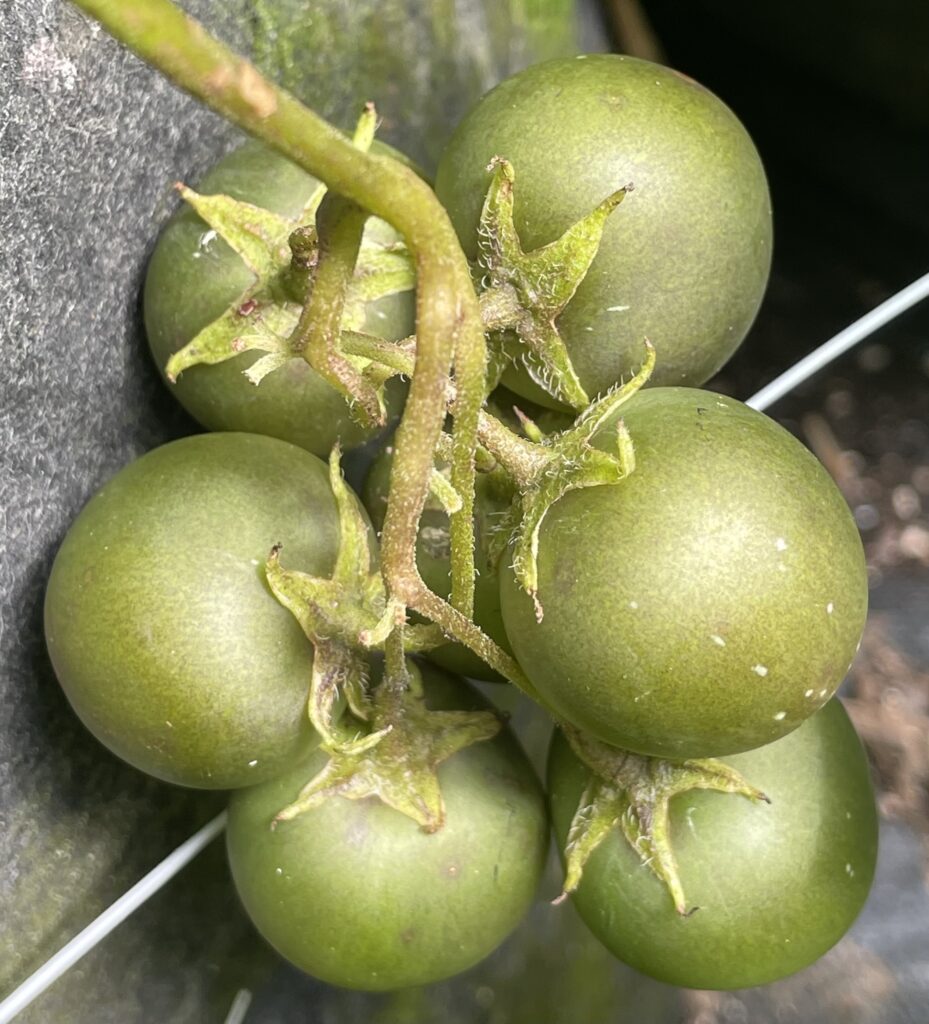
Potato fruit from diploid selection at my farm.
While observing seedling populations, the first characteristic I noticed was root structure. Like all woody plants, this plays a huge role in the adaptability of the plant. At first, I did not pay attention to root structure in the potato. I mean why would you? You are only focusing on the root storage part. I believe this is a common mistake for those who are actual potato breeders. To begin with it’s a one in eighty thousand chance to create a new variety. I realized that dense and thick rooting helps in the plants ability to withstand drought especially if those roots encapsulate the soil in a way that attaches itself to the soil particles in great abundance. Many potatoes do not have that ability and it is probably not desirable from the standpoint of commercial harvesting. Hairy leaves are important for insect resistance while repelling browsing by animals and drought tolerance. Yields are not as important in this situation, but it should be worth growing and productive enough to make you want to grow it again and again. I once had a potato that would only produce one potato a year. That would probably not be sufficient.

Potato Roots-Clumpy characteristic
Weediness represents the highest form in the plant world growing and reproducing within its own evolutionary play on an integrative ecological stage. It could be a garden, woodland, field, waste place or even a pot on your deck. It would be the home for the potato that you created or found. It would nourish your body and soul knowing you played a role in its journey throughout time and space.
And you thought it was just a weed going temporary waif. Not a chance.
Enjoy. Kenneth Asmus
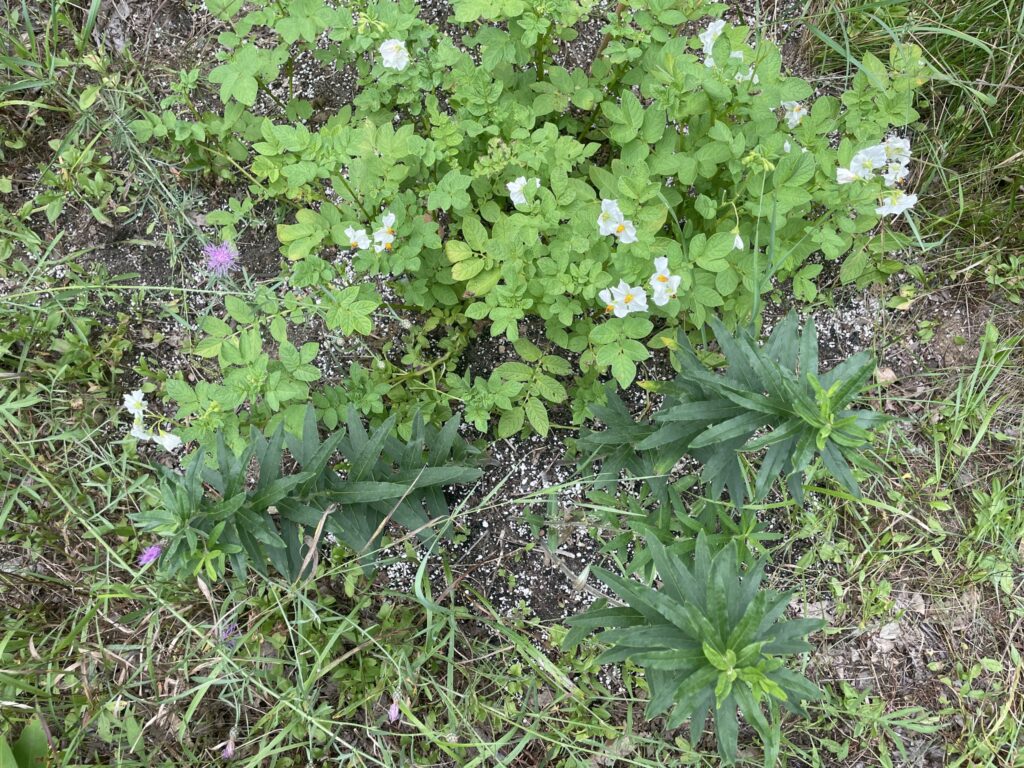
Feral potato with butterflyweed, star thistle, quackgrass, applemint
